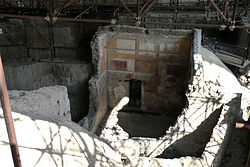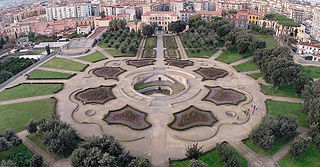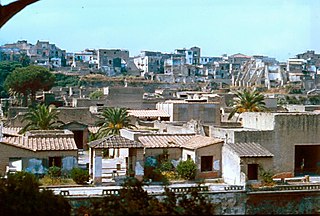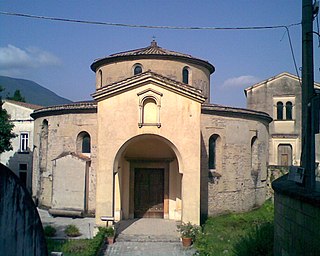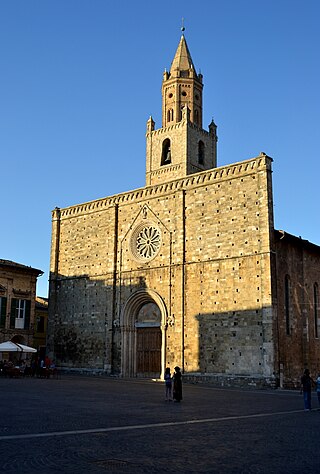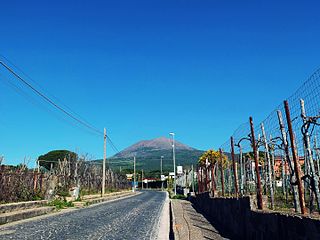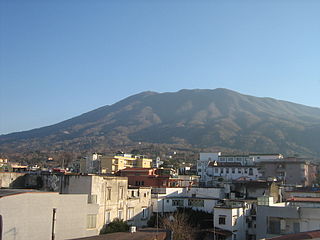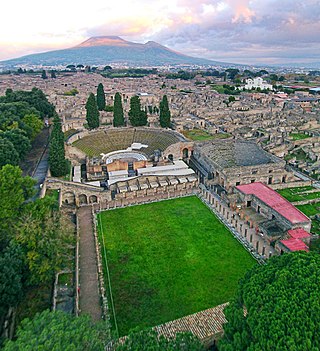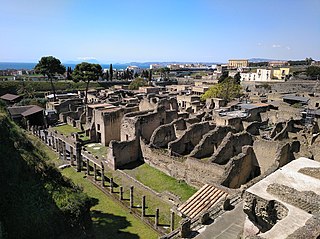Characteristic are the historic center and the surrounding area which retain the appearance of the past.
The city also has an archaeological site of interest. According to Strabone, a Roman historian of the 2nd century, the city was founded by the same group of Osci who founded Herculaneum and who called the city Sommax. Julius Andronicus reports in his Acutum Fondationum that the city was founded by a group of plebeians led by Tiberius Gracchus who called the city "Saxo Tribunum" (city of the plebeians). Marenzio, historian of 77 AD. describes the foundation with the Samnites. The discovery took place in 1997, when the amateur archaeologist Nicola Sannuto discovered the archaeological site that corresponded with Saxo Tribunum.
The village of Casamale
The village that takes its name from the aristocratic Causamala family, which appears for the first time in a lease deed of 1011. The ancient Aragonese walls surround the village, consolidated in 1467 by King Ferrante of Aragon. These walls were used to contain the embankments around the "Terra Murata". Four gates opened along the walls: Porta Terra (or Porta San Pietro) located on the north side; Porta Formosi (or Porta Marina) located on the west side; porta della Montagna (or porta Castello) located on the south side; Porta Piccioli (or Porta All Saints) located on the east side.
The central nucleus of the Casamale is an ecclesiastical building, the convent of the Hermit Fathers of Sant'Agostino with the chapel first dedicated to San Giacomo and then, after the construction of the church, to Santa Maria della Sanità. In 1595 the church was awarded the title of Collegiate changing the name of Santa Maria Maggiore. The Casamale enclosed within its walls, in addition to the imposing Collegiata, convents and palaces of the aristocracy which only partially occupied the insulae. These lands were gradually occupied and inhabited by settlers, traders and artisans. The ancient medieval village of Casamale is still intact, despite the evident traces of tampering consisting of concrete interventions between the ancient stone walls.
The village develops on the ridge of Monte Somma, between 180 and 220 m a.s.l. and consists of a space delimited by ancient walls, still clearly visible today, which identify a clear border with the rest of the town. The village is cleverly protected to the south by Mount Somma, to the east by the Fosso dei Leoni riverbed and to the west by the Cavone del Purgatorio riverbed. Around the center, the current Collegiata, a medieval system develops made up of narrow streets, some arches, with the roofs of the houses that seem to touch, not allowing the sun to filter through. The buildings are gray in color and there are often important piperno entrance arches. The balconies of the houses, decorated with wrought iron parapets, are slightly protruding and are set on robust thresholds in worked piperno. Architectural elements of the 16th, 17th and 18th centuries stand next to the medieval buildings, including Palazzo Colletta-Orsini, Palazzo Basadonna, the monastery of the Carmelite Nuns, Palazzo Secondulfo. This important heritage of art and culture has undergone numerous manipulations which have destroyed in a short time structures that had remained intact for centuries.
Borgo Casamale, linked for years to the traditional and evocative "Festa delle Lucerne", which takes place every 4 years, made up of picturesque views and perspective games, thanks to the presence of the lamps that in the historic center outline with touches of color and intense and warm brightness, corners and glimpses of alleys, highlighting the historical artistic and cultural heritage of Somma Vesuviana. Passionate craftsmen, exhibiting their work, highlight a past on which to continue building, a past that fascinates and involves citizens and visitors.
The church of San Domenico
The church of San Domenico rises in the heart of Somma Vesuviana and with the consent of Pope Nicolò IV was built by King Charles II of Anjou in 1294. It was later entrusted to the Preachers of the order of the Dominicans. The Angevin origin of the church is recalled by a canvas, the work of Cacciapuoti and placed behind the altar, depicting Charles II of Anjou kneeling at the feet of the Virgin and San Domenico who sanctifies. The church was dedicated to Santa Maddalena.
The monastic complex established itself as a cultural center and as a venue for important economic-patrimonial transactions and for the management of income from its extensive real estate accumulated through bequests, donations and purchases. On the floor of the church some tombstones recall the burial of characters who over the centuries gave life to Somma Vesuviana. The waters of the cistern located in the cloister have quenched the thirst of the local population for centuries. The cloister was also for a long time the seat of the meetings of the Mayor and of the city parliament, a privilege abolished by the Viceroy of Naples in 1696.
Numerous catastrophic events, including the 1631 eruption, caused collapses and consequent restoration and change interventions. In the eighteenth century, due to many restorations, the underlying Gothic structures were made illegible. In 1794 another eruption caused the collapse of some structures and with the subsequent reconstruction the current façade was built against the existing one. With the second abolition of religious orders (1861-1866), the church and convent were given ownership to the municipality of Somma Vesuviana. The church was entrusted to a rector appointed from time to time by the municipal council. Some rooms of the convent were instead used as municipal headquarters and for other public offices, political, cultural, recreational and welfare organizations. After the 1980 Irpinia earthquake the church was declared unfit for use, and only later were restoration and static rehabilitation works carried out.
The facade of the church today is characterized by a narrow pronaos maintained by two Ionic columns, which is accessed by a staircase in piperno. The pronaos continues to the second order, with a recessed space enclosed by a balustrade. Six semi-columns articulate the facade, four of which are a direct extension of the pronaos below. Above this second order, a circle-shaped window hides the rose window of the ancient Gothic façade. Above this is the tympanum. The internal space, with a single nave, is preceded by a vestibule with Corinthian columns on which the monks' choir was located. The side chapels and the square apse are decorated with exquisitely crafted stuccos. Canvases by great authors of the 17th and 18th centuries enrich the chapels, while the canvas by Cacciapuoti is placed in the apse. The presence of many seventeenth and eighteenth century tombstones documents the importance and nobility of the church.






